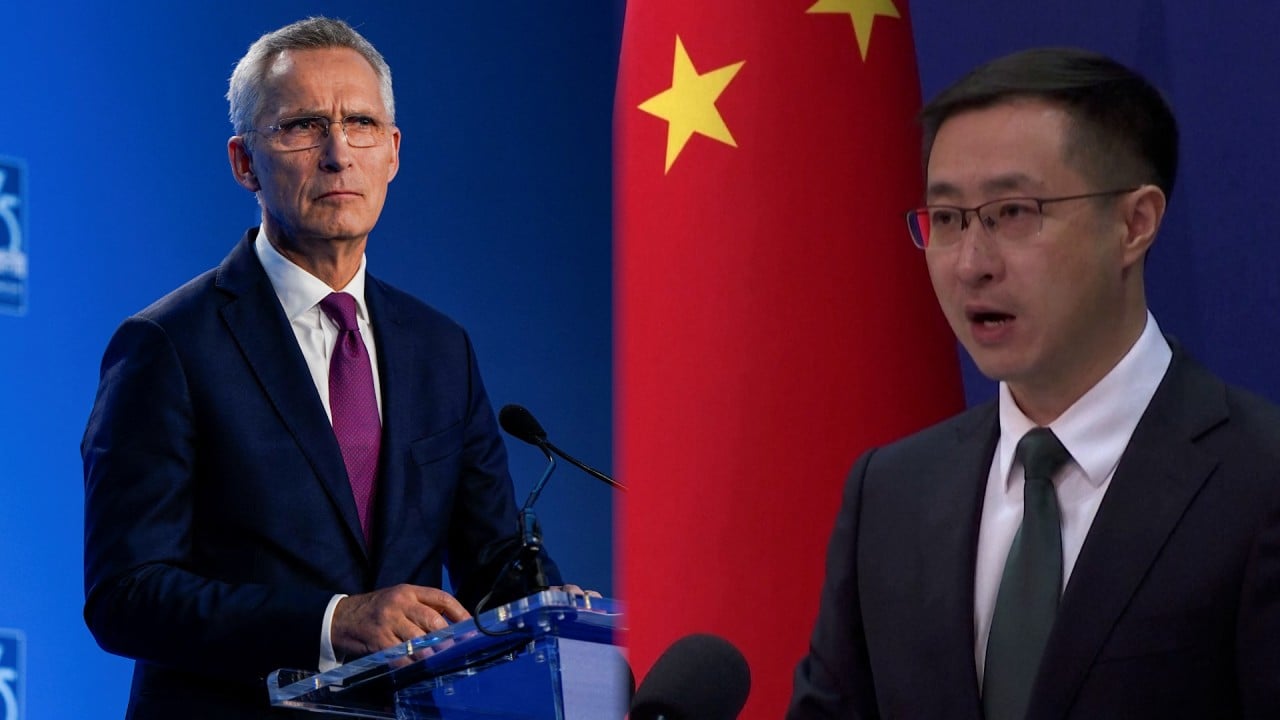Chinese warships near Alaska signal growing naval projection – and a message to Nato
The Chinese crews stated their purpose was “freedom of navigation operations” in radio communication, while the vessels were monitored until they had sailed south of the Aleutians towards the North Pacific Ocean to ensure there were “no disruptions to US interests in the maritime environment around Alaska”, the coastguard said.
The latest sightings were the fourth consecutive year that Chinese military ships have been spotted in the region. In July 2023, Washington deployed destroyers near Alaska after the Chinese and Russian navies conducted joint patrols near the Aleutian Islands.
Troy Bouffard, director of the Centre for Arctic Security and Resilience at the University of Alaska Fairbanks, said the entry of the Chinese warships into the waters off Alaska is “rare” because of historical maritime constraints, which until recently, have mostly confined China to coastal operations.
“However, the People’s Liberation Army (PLA) Navy has embarked on an ambitious trajectory to rapidly develop its blue-water capabilities, with a particular emphasis on naval force projection,” Bouffard said.
“This strategic pivot is evident when conducting operations within another state’s EEZ. This approach not only signals China’s evolving maritime doctrine but also serves as a crucible for its developing naval presence in the international arena.”
The sightings – on July 6 and 7 – came a week after the Chinese navy started a joint patrol with its Russian counterpart in the Pacific Ocean, the latest in a series of annual patrols which began in 2021.
China’s defence ministry said the Chinese and Russian naval vessels sailed in the western and northern Pacific Ocean and had entered the South China Sea on Sunday, where a joint exercise was taking place.
“This action is not aimed at any third party and has nothing to do with the current international and regional situation,” a ministry statement said.
Hu Bo, director of the Beijing-based think tank South China Sea Strategic Situation Probing Initiative, said that the passage of Chinese warships near Alaska was becoming more regular.
“Chinese warships are going [near Alaska] more often, but this has not become the PLA’s normal practice yet,” Hu said.
He added that the recent passage was “separate” from the joint patrol with Russia.
The Arctic region has gained attention for its strategic importance – not only as a flashpoint between the US and Russia but also as a marine link between the Asia-Pacific and Europe, as climate change melts Arctic ice.
As a result, Alaska and the Bering Sea in the North Pacific Ocean have become significant gateways to the Arctic Sea.
Marc Lanteigne, an associate professor of political science at the Arctic University of Norway in Tromsø, said the North Pacific Ocean has become an “arena of greater Sino-Russian maritime cooperation”, where China has sought to use its closer strategic alignment with Russia to allow for an increased Chinese military presence.
“Although Beijing has been cautious about framing its Arctic policies in hard power terms, the Chinese government is now more willing to demonstrate the ability of its military to operate closer to the Arctic Ocean,” Lanteigne said.
While it remained “very unlikely” that China would seek any unilateral military presence in the Arctic, Beijing was interested in partnering with Moscow to “counter what it sees as a US-led and Nato-led attempt to expand a Western strategic agenda in the far north”, he said.
Following the sightings of the Chinese vessels in the waters off Alaska, four Asia-Pacific countries – South Korea, Japan, Australia and New Zealand – took part in the Nato summit in Washington last week.
Liselotte Odgaard, a senior fellow at the Hudson Institute, a Washington-based think tank, said China’s military cooperation with Russia is also a “main enabler” for Moscow to continue to pose a hard power threat to Nato member states in the Arctic region.
She said the “real concerns” about China and Russia’s close military collaboration in the Arctic would be reinforced by their economic and technological cooperation.
“[China has] some of the most advanced logistic systems in the world to combine air, land, [and] sea transport. They have space surveillance, polar satellites [and] they can share data with Russia, which creates situational awareness about the movements of sea-ice as well as adversaries, Odgaard said.
“All these things can … also have military uses.”
“China wants to help [Russia] continue to pose a hard power threat to Nato because that takes the heat off China in its home region in Asia, where it’s busy enough with other conflicts,” she said.
“China does not want to be a military power in the Arctic, but it will signal support for Russia, as it feels that the West is increasingly provocative and uncooperative.”
Cameron Carlson, founding director of the Homeland Security and Emergency Management programme at the the University of Alaska Fairbanks, said China’s self-positioning as a “near-Arctic state” reflects its ambition to capitalise on economic opportunities.
These include oil, gas and minerals extraction, as well as shorter maritime routes between Asia and Europe, he said.
“Collaborations with Russia will continue to further enhance China’s military presence and surveillance capabilities in the Arctic, challenging US influence and capabilities within the region.”
According to Carlson, the US perceives China’s Arctic ambitions “with suspicion, particularly concerning potential military expansion and challenges to Arctic sovereignty”.
“The US is likely to bolster its Arctic strategy by increasing its military presence and hopefully invest in Arctic infrastructure and capabilities, while simultaneously strengthening alliances with other Arctic nations to counterbalance the PRCs efforts to expand its influence,” he said.

